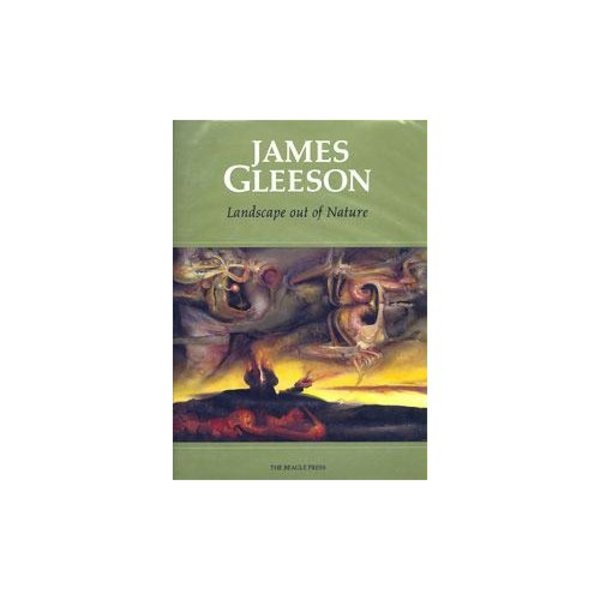Gleeson’s themes generally delved into the subconscious using literary, mythological or religious subject matter. He was particularly interested in Jung’s archetypes of the collective unconscious.
During the 1950s and ’60s he moved to a more symbolic perspective, exploring notions of human perfectibility. At this time he increasingly fashioned small psychedelic compositions made using the surrealist technique of decalcomania in the background, to suggest a landscape, and finished by adding a fastidiously painted male nude in the foreground. Many of his paintings had homoerotic undertones, something which reflected on Gleeson’s own homosexuality.[1] The ideas for these compositions also saw Gleeson move into collage with his Locus Solus series, where he produced a substantial body of work by placing dismembered photographs, magazine illustrations, diagrams and lines of visionary poetry against abstract pools of ink.
Since the 1970s Gleeson generally made large scale paintings in keeping with the surrealist Inscape genre. The works outwardly resemble rocky seascapes, although in detail the coastline’s geological features are found to be made of giant molluscs and threatening crustaceans. In keeping with the Freudian principles of surrealism these grotesque, nightmarish compositions symbolise the inner workings of the human mind. Called ‘Psychoscapes’ by the artist, they show liquid, solid and air coming together and directly allude to the interface between the conscious, subconscious and unconscious mind.
Gleeson’s later works incorporate the human form less and less in its entirety. The human form was then represented in his landscapes by suggestions, an arm, a hand or merely an eye.
His retrospective in 2004-2005, Beyond the Screen of Sight, included 120 paintings and was exhibited in Melbourne and Canberra. In 2003 the Art Gallery of New South Wales exhibited Gleeson’s drawings for paintings.
In September 2007, the largest collection of Australian surrealism ever collected was donated to the National Gallery of Australia by Ray Wilson. The collection included various works by James Gleeson.
Gleeson died in Sydney on 20 October 2008, aged 92.
Very sound tight copy, but with front blank cut and edgewear to dustjacket.
S10
